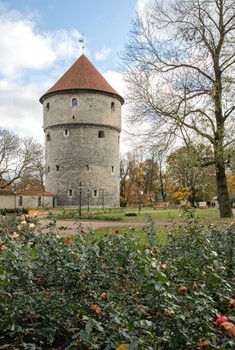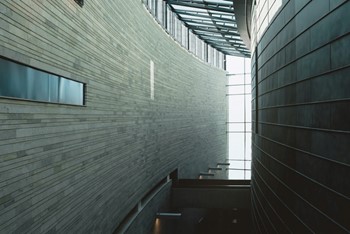The best museums in Tallinn
Tallinn’s rich history and cultural significance is documented by several amazing museums in the Estonian capital city. Get to know the local culture by exploring a potpourri of our favourite museums and galleries in the city, covering everything from maritime history to contemporary art and Estonia’s cultural heritage.
Lennusadam Seaplane Harbour
Located in a unique concrete dome that was constructed under Peter the Great and founded in 1935, the Lennusadam Seaplane Harbour with the Estonian Maritime Museum is one of the world's largest maritime museums in all of Europe and also one of Estonia’s most popular museums.
The museums houses an impressive collection of over 200 authentic objects around Estonia’s maritime culture that are preserving and promoting knowledge about the country’s maritime history. Highlights include Lembit submarine from 1937, the oldest sunken ship discovered in Estonia’s waters and much more. Many interactive and exciting simulators and activities also make it the ideal destination for families.

Kiek in de Kök and Bastion Passages Museum
Discover a 500 meter long complex at Tallinn’s city walls consisting of four medieval defence towers, the Kiek in de Kök tower, the Maiden’s Tower (Neitsitorn), the Stable Tower (Tallitorn), the Gate Tower (Väravatorn) as well as the bastion passages and the Carved Stone Museum enriched with fascinating exhibitions.
Kiek in de Kök used to be the mightiest artillery in the Baltics during the 15th century. The museum tells you all about the Tallinn’s history and fortifications as well as how crimes used to be punished in the old days. Go on an exciting journey through the hidden tunnels from the 17th and 18th century and marvel at decorated portals and reliefs in this incredibly well preserved piece of history.
Great Guild Hall
The Great Guild, once a guild for German Hanseatic merchants and artisans, used to reside in one the most illustrious buildings of medieval Tallinn: The Great Guild Hall. Over time, the Gothic-style building constructed in 1410 witnessed a variety of Guild events from grant parties to court proceedings and church services and was the centre of cultural and social life for hundreds of years.
The Hall’s story is closely connected with Tallinn’s long tradition of trade and culture in Northern Europe during the Middle Ages. Today, the Hall is a specimen for Hanseatic architecture and home to an exhibition about 11,000 years of Estonian history, introducing you to Estonian personalities and major historical events.
Estonian Open Air Museum
The Estonian Open Air Museum, or Eesti Vabaõhumuuseum how it is locally called, is an amazing museum where you can discover how the Estonians used to live, rural architecture and village life. Just a 15-minute drive away from the city centre, the museum consists of 14 different farms and more than 100 traditional buildings.
The museum’s exhibits are constantly updated and expanded. Buildings include not only farms but also a chapel, a school, different mills, shops and even a fire station illustrating how Estonian families lived from the 18th to 20th century. Check the museum’s calendar for more interesting temporary exhibitions and events throughout the year.
Vabamu Museum of Occupations & Freedom
This museum focuses all on occupation, resistance, rebuilding and freedom. Take a deep dive into Estonia’s more recent history through its citizen’s personal memories and moving destinies – everyone gets a chance to speak here: victims, freedom fighters and oppositionists but also perpetrators and followers from pre- to post-Soviet Estonia.
Vabamu highlights the importance of freedom, how beautiful and fragile it is at the same time and takes a moment to look back on the country’s recent history, how it emerged and recovered from occupation and what price it paid for freedom.
Kumu Kunstimuuseum
 The Kumu Art Museum in the picturesque Kadriorg Park is Estonia’s largest art gallery interpreting Estonian art from the 18th century while its unique architecture and huge glass front make it an attraction on its own. It functions as a national gallery but connects Estonia’s cultural heritage to contemporary art.
The Kumu Art Museum in the picturesque Kadriorg Park is Estonia’s largest art gallery interpreting Estonian art from the 18th century while its unique architecture and huge glass front make it an attraction on its own. It functions as a national gallery but connects Estonia’s cultural heritage to contemporary art.
Kumu’s permanent exhibitions focus on Estonian artists ranging from Baltic German and Estonian national art to art from Soviet Estonian and the Post-Soviet period, aiming at sparking social and cultural debates in connection to historical events.
